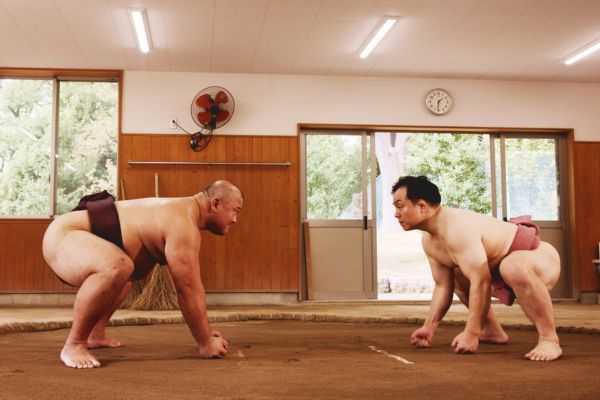Wrestling is one of the oldest and most physically demanding sports in the world. Its rich history, spanning centuries and cultures, continues to captivate athletes who crave a test of strength, discipline, and mental endurance. If you’ve ever watched a wrestling match and thought to yourself, “I want to do that,” then you’re not alone. Many people are drawn to the intensity and athleticism wrestling offers but are unsure how to take the first step. If you’re wondering how to start wrestling training, this guide will provide a comprehensive roadmap to get you ready for the mat.
Understanding the Foundation of Wrestling
Before diving into how to start wrestling training, it’s important to understand the sport’s foundation. Wrestling is more than just physical aggression—it’s about technique, strategy, and conditioning. Whether you’re interested in freestyle, Greco-Roman, folkstyle, or professional wrestling, each style demands a unique combination of agility, endurance, and mental toughness. Learning the basics of the sport will give you a head start before you even step into a wrestling room.
Training in wrestling begins with grasping the rules and objectives of the sport. Understanding how points are scored, what constitutes a legal move, and what techniques are considered offensive or defensive are critical first steps. This knowledge shapes your approach to training and helps you develop a deeper respect for the sport’s structure.
Finding the Right Training Environment
One of the most crucial decisions in how to start wrestling training is choosing where to train. The right environment can dramatically influence your progress and motivation. While some may have access to school or college wrestling programs, others may need to search for local wrestling clubs or gyms that offer beginner classes. It’s important to find a facility with experienced coaches who understand how to develop new athletes safely and effectively.
A supportive and structured environment encourages continuous learning and accountability. Training alongside others who share your goals can push you to work harder and stay committed. Before signing up, visit the facility, talk to the coaches, and observe a training session if possible. This helps ensure you’re entering a space that aligns with your goals and values.
Preparing Your Body for Wrestling
Wrestling demands more from your body than many other sports. Strength, flexibility, endurance, and agility all play a role in a wrestler’s performance. If you’re starting from a place with little athletic background, it’s important to ease into physical preparation. Focusing on bodyweight exercises, stretching routines, and cardio workouts can help condition your body before full-on wrestling training begins.
Once you start training, expect to engage in a mix of drills, sparring, and conditioning exercises. Wrestling practice is intense, and your body will be challenged in new ways. Pay attention to recovery, nutrition, and hydration to support your physical development and minimize the risk of injury. Building a strong foundation of general fitness gives you an advantage as you transition into technical wrestling skills.
Learning the Essential Techniques
As you begin formal training, you’ll encounter a range of techniques that form the core of wrestling. Learning how to start wrestling training includes familiarizing yourself with basic stances, takedowns, escapes, and pins. Mastery of these fundamental moves creates the groundwork for more advanced strategies as you progress.
Drilling techniques repeatedly might feel tedious at first, but repetition builds muscle memory, which is crucial in wrestling. In live matches, your body needs to react instinctively. This only happens through dedicated practice. Watching instructional videos, reviewing training footage, and studying successful wrestlers can also reinforce what you learn during practice.
Acquiring the Right Gear
When considering how to start wrestling training, having the right gear is often overlooked but essential. Proper equipment not only ensures safety but also enhances performance. Wrestling shoes, headgear, mouthguards, and a breathable singlet are standard pieces every beginner should invest in. These items are designed to reduce injury risk and improve your ability to move efficiently on the mat.
Wrestling shoes offer superior grip and ankle support, both of which are crucial during grappling. Headgear protects your ears from friction and injury, while singlets are tight-fitting to prevent opponents from grabbing your clothing during matches. While gear doesn’t make the wrestler, it contributes significantly to both comfort and safety during training.
Developing Mental Toughness and Discipline
Wrestling is as much a mental sport as it is physical. Matches can be grueling, and training often pushes you beyond your comfort zone. Learning how to start wrestling training also means preparing yourself mentally. Developing resilience, focus, and a growth mindset is critical to long-term success in wrestling.
Every wrestler faces setbacks—whether it’s a tough loss, a plateau in progress, or the fatigue of rigorous practice. How you respond to these moments defines your journey. Embracing the process, remaining coachable, and setting clear, realistic goals will help you stay on track and motivated. Surrounding yourself with positive influences and supportive peers can also play a significant role in your mental development.
Adapting to a Wrestler’s Lifestyle
Starting wrestling training introduces a lifestyle that requires commitment and consistency. Sleep, nutrition, time management, and stress control become key elements of your daily routine. You can’t train effectively without proper rest and fuel. A diet rich in protein, healthy fats, and complex carbohydrates supports your training efforts and recovery.
Balancing training with academics, work, or social life can be challenging, but planning ahead and sticking to a schedule will make it manageable. Wrestling often teaches life skills that go beyond the mat—discipline, perseverance, and confidence—which translate well into every other area of your life. Embracing the wrestler’s lifestyle means living intentionally and working towards excellence in all aspects of your routine.
Progressing in the Sport
As you gain experience, your training will evolve. Once you’ve mastered the basics, you can begin to develop your unique wrestling style. Some wrestlers rely on strength, while others leverage speed, technique, or strategy. Continuing to learn, seeking feedback, and competing regularly will help you refine your approach and become a well-rounded athlete.
Participating in matches, even at a beginner level, provides invaluable experience. Win or lose, each bout teaches you something new about your technique, mindset, and areas for improvement. Competitions also help you gauge your progress and set benchmarks for future growth. The more mat time you gain, the more confident and skilled you’ll become.
Conclusion: Your First Step Toward the Mat
Starting wrestling training is a bold and empowering decision. It takes courage to step onto the mat for the first time, but the rewards are immense. From developing physical strength and mental resilience to forming lifelong friendships and gaining discipline, wrestling offers more than just a sport—it offers a transformative journey.
If you’re wondering how to start wrestling training, the most important advice is simply to begin. Find a supportive environment, commit to learning, and prepare yourself physically and mentally. Every wrestler started somewhere, and your journey begins with the first move. Embrace the process, and soon you’ll find yourself not just training—but thriving—as a wrestler.







